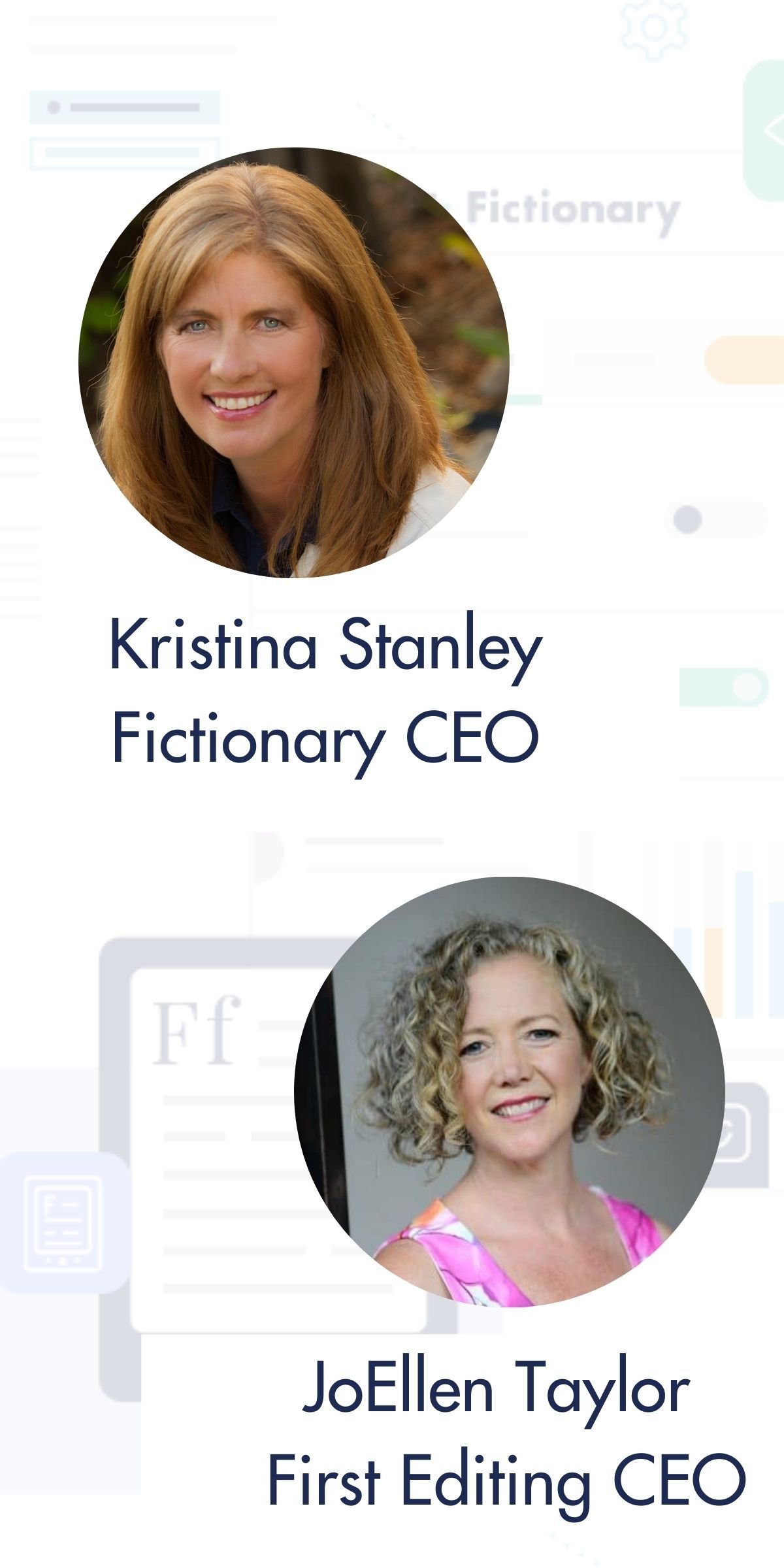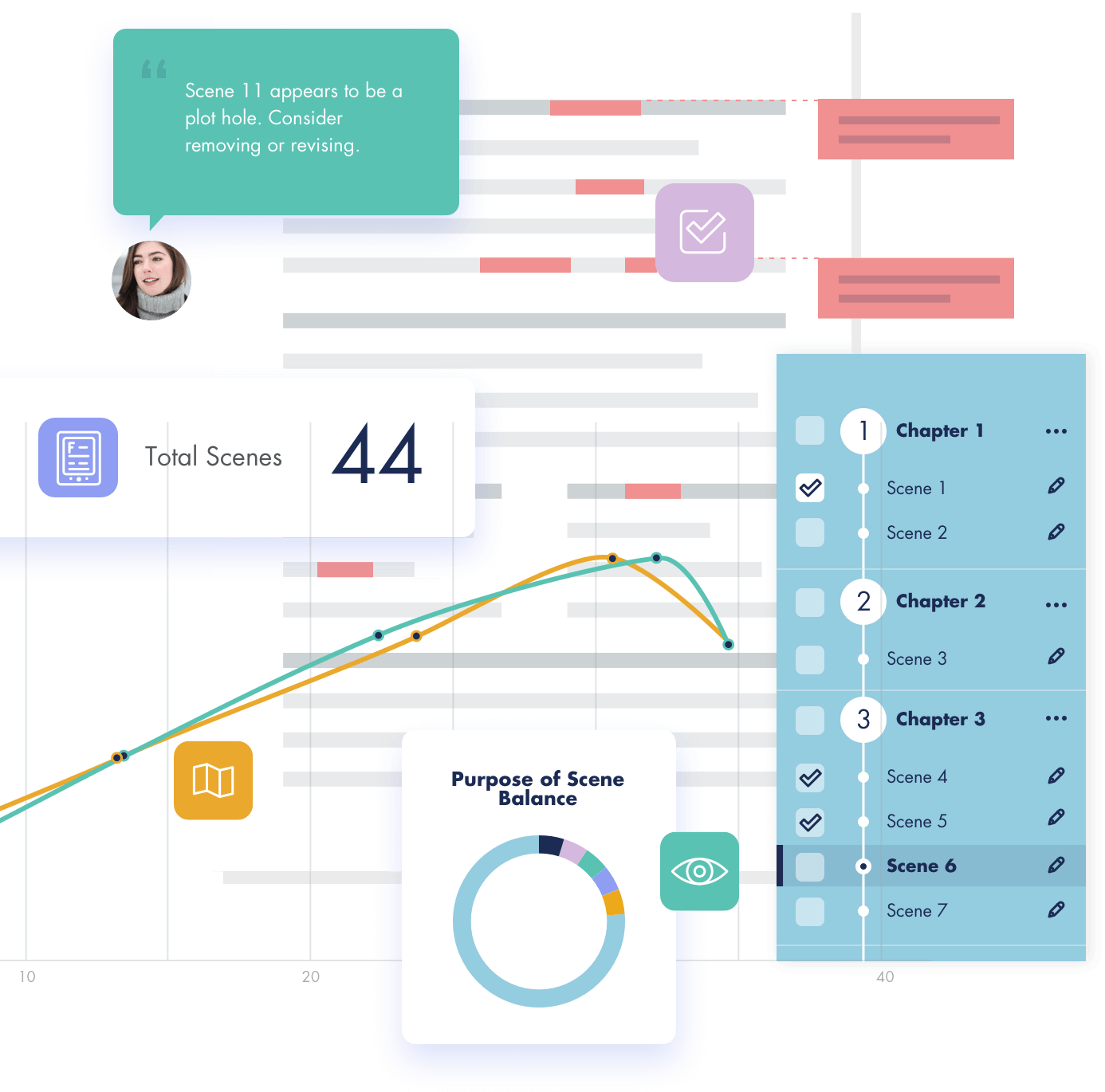
Story Element #7 & #8
Scene Impact on Characters and Character Emotions
Each scene must impact the point of view character or the protagonist in a positive or negative manner.
To create a compelling character arc, it’s important to write scenes where the emotional state changes. If the point of view character is happy at the beginning of a scene and in the same state of happiness as the end of the scene, what was the purpose of the scene?
Thus video teaches you how to review the scene impact and review your story structure for the best results.
Next Story Element: POV Knowledge Gained
![]()
Rather read than watch?
Video Transcript
JoEllen:
My name is Joellen, and we are joined again this week with Kristina Stanley of Fictionary as we walk through the 38 Fictionary Story Elements, and we’ve been talking about the point of views, we’ve been talking about characters and development.
It’s been very exciting and there’s so much going on out there. Kristina focuses on both the writers as they try to create their stories and also training editors as she has done at our company.
So we really want to talk today about the scene impact on the point of view characters and the protagonist if you’re writing from multiple points of view. Can you walk us through?
![]()
What is a Point of View Character?
Kristina:
Sure. I’d love to. Hi everybody, glad you’re here this week. We’re going to talk about two things as JoEllen mentioned. So I’m just going to clarify that a little bit. So writing from one point of view character means that every scene is witnessed from that character’s eyes and there’s many books that do that. It’s a great way to writer.
The other way to write is you have multiple points of view. And so one scene is written from character A’s point of view and others from character B. And the extreme example of this is A Game of Thrones, where there are many point of view characters.
So when you’re reviewing your scenes, what we’re asking you to do at this point is to review the impact on that character. B impact, I mean, what’s their emotional response to whatever happened in the scene. It can also be what’s the physical response. So if they were attacked or hit or had a car crash, it can be the physical response to it. So you have two ways of assessing it for two different types of characters.

![]()
How do you Analyze a Character Arc?
JoEllen:
Okay, perfect. So we’re looking at this, characters and how they’re doing that. So if you’re checking for the positive and the negative impact on the character, how do we use this exactly? How do we put this into use today?
Kristina:
Okay. So this comes back to what we’ve been talking about is your entire story structure is based on the right balance. And so you want to take the reader on a roller coaster ride and to do that, it needs to be up and down and up and down on an emotional reaction that the reader is having to the story.
So the action here that’s really specific is you read through the scene and then you determine two things. For the point of view character, do they end up in a positive or a negative state at the end of the scene? So are they happier? Are they sad or are they hurt? Are they physically stronger because they went through a training session? What is it? And you mark down just a plus or a minus. You want to do this so you can see it at one, in one place.
Once you’ve done this for both the protagonist or the point of view character, depending on how your story is structured, then what you can see is the balance. And you can look at if you have negative, negative, negative, negative plus plus negative plus less, and you can see how your actual story is flowing from the impact or physical impact on your characters.
![]()
Are your characters too happy?
JoEllen
Exactly. So, and if you, once you have this, you’re looking at that, what kind of advice can you expect to get from an editor in regards to the story? You know, balancing that and making sense of that information.
Kristina:
Yeah. So this is a great way for an editor to visually show a writer, two things. One, if the story is getting a bit dull, there’s probably too many positives in a row.
And so say there’s five or six scenes is plus plus plus plus plus. And I started thinking, yeah. Okay, happy, happy, happy. That’s nice. I don’t want to read it anymore. There is a point where the editor can really specifically go right here in between these scenes, put a negative, like turn this scene around and make something bad, happen to your character because it’s just too much of everything’s nice.
And I actually edited a book about a family that was just super happy and you think, okay, that’s nice. And I would love that in my real life, but when I’m reading this I, what I want to read, I want to know all the trauma people are going through. And I don’t know why it’s just the way it is. So that’s, that’s on the positive side. The other side that’s an editor’s role is to look at, if you can’t catch your breath, like you think, Oh, I’ve got to put this book down.

A Look at the Bourne Identity Pacing
It’s exhausting. It’s typically, and it happens more in the thriller genre where it’s go, go, go, go. And there’s never a scene where you get to actually breathe. And at the Jason Bourne movies have, have a scene that they used in two of the movies, but it worked is that they’ve gone through that main characters have gone through this traumatic experience in scene after scene, after scene.
And then they give them a breath where they dye each other’s hair and cut hair and stuff. So they’re going to look different and they chopped and whatever, but it gives the reader time to actually take their breath. And so the editor’s role is to go, okay, look here too many scenes ending in the negative in a row, put something positive in here just to give the reader a break.
It doesn’t have to be fully positive, but it needs to be a reflection scene or something where both the reader and the character can catch a breath.
JoEllen:
Right. Kind of a little semester there. So I think that’s good. Again, so we’re going to take a look at our positive or negatives. We’re going to see how we’re feeling emotionally. We’re going to evaluate that and then see how that’s going to work and balance it out with some ups and downs. Anything Else.
Kristina:
No, I think that’s good for this week. That’s enough of an action item for someone to go away and do.
JoEllen:
That sounds huge. So again, thank you for joining us this week. As we cover the 38 elements of fiction writing again, this is for all of you writers out there and you editors are helping them along the path to make sure that we’re not overlooking any of those important small details, which help us create successful books. Best of luck to you.


